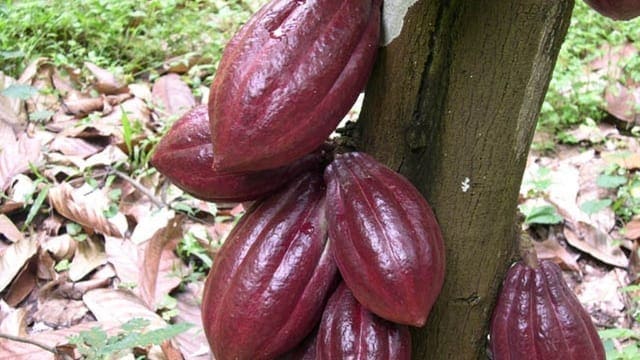There are many reasons why we consume food, with the obvious and most important one being to obtain nutrition. Consumers also indulge in their favourite foods and beverages to derive pleasure and enjoyment, presented in the form of exciting tastes and pleasing aromas. This is courtesy to a special component, the flavour, which amplifies and modulates the sensory experience associated with specific qualities of a product.
Flavour specificity is caused by receptors in the mouth and nose, detecting chemicals found within the consumed item. These receptors respond by producing signals that are interpreted by the brain as sensations of taste and aroma, characterising a particular food. For example, a green apple tastes the way it does because of the unique combination of chemicals found naturally within it and are perceived by the mouth, nose and brain as the distinct blend of sweet and sour tastes and volatile aromas. Identifying these chemical profiles allows food producers to either naturally extract the compounds or artificially synthesise, making it possible for the production of candy, soda and other products with green apple flavour.
Flavours are very complex, with dozens or sometimes hundreds of chemicals interacting to create each food and beverage’s unique taste profile. Tea, for example, has 47 separate chemicals which make up its flavour, while the taste of coffee is made up of almost 100. However, some flavours have a dominant chemical component which, even on its own, imparts its distinct taste to any food it’s added to.
Increasing research and development activities by food companies to develop a broad variety of unique flavours as they diversify their offerings and expand their product lines, is a key factor contributing to growth of food flavour market. Just imagine a beef flavoured beverage by one of your favourite brands, sounds interesting but not very enticing. These calls for collaboration between food processors and flavorists to prepare flavour additives that meet the evolving consumers taste and preference.
In tune with health & wellness
The pandemic has changed many people’s values and accelerated a trend already apparent for several years: a focus on health and wellness. This has expedited demand for flavours that represent a healthier position of a product.
Fruity flavours appear to be particularly aligned with this trend as, Innova Insights highlights that one in three consumers globally say that they would choose orchard flavours when wanting to boost their immunity. In particular, citrus flavours piggyback on this interest with classics like orange, grapefruit and lemon prominently featuring in sparkling drinks, immunity boosting shots and other beverages. They are also joined by other trending options: lime, yuzu, tangerine, kumquat, clementine and pomelo. The link between sour flavours and immunity boosting has influenced the use of sour cherry, which is the most common sour-flavoured ingredient alongside citrus fruits.
According to Mintel’s New Products Database, food and beverage launches that had both a citrus flavor and an immune health claim jumped 21% from 2018 to 2021. Some of the recently launched products with citrus flavour include Chivita Active Zest by Nigeria-based Chi Limited, featuring a mix of 5 citrus fruits. Meanwhile, Beam Suntory expanded its Effen vodka portfolio with launch of EFFEN Yuzu Citrus.
The popularity of citrus has also driven ingredient development, with Kerry in 2020 rolling out a line of clean-label citrus extracts to include lime, lemon, orange and tangerine. The new extracts are water soluble and colourless, ideal for sparkling and still flavoured waters, ready-to-drink beverages and alcoholic options such as hard seltzers and mocktails. Other ingredient companies such as International Flavors & Fragrances (IFF), Symrise and Bontoux also offer citrus extracts.
During this time when lives are disrupted, consumers are reaching for food and flavors that provide emotional comfort, make them feel pampered and remind them of childhood.
The health halo surrounding citrus flavour has also given way to exploration of herbs, spices, and roots with an earthy character that are also deemed to have immunity boosting and other health benefits. They are increasingly finding their way into drink bottles with 74% of global launches of shots in the past three years containing spicy flavours, with ginger and turmeric being the most common. For instants last year, Kenya-based Tropikal Brands Afrika, launched an immune-boosting energy drink with ginger dubbed Super-C.
The pursuit of healthier lifestyles is also driving demand for flavours targeting more general wellness, both mental and physical. Botanical flavours are increasingly popular for relaxation, stress reduction and sleep enhancement, featuring ingredients such as lavender, CBD/cannabis and turmeric, among others. There have been some notable new offerings in this segment, including Karma CBD Water, which is being distributed by alcohol giant Constellation Brands.
The line includes naturally sweetened flavours such as Blueberry Yuzu, Blood Orange Papaya and Lavender Orange, which could have as much play in a non-alcoholic gin as CBD-infused enhanced water. The use of CBD has also crossed over to the hot beverage segment with Socati Corp offering CBD Coffee Brightener and CBD Coffee Sweetener variants.
Floral flavours are also appearing in more unexpected formats including coffee blends (e.g. lavender & coffee, rose & coffee) as a way for brands and consumers to elevate their daily routines. It is safe to say established flavours perceived to be dull are being reinvented, often in much more complex and sophisticated combinations.
According to the Innova Flavour Survey 2021, one in three consumers globally agreed that interesting/exotic combinations influenced their flavour choices in food and beverages. Innovations can feature in areas such as cross-category mashups, hybrids within beverages and sweet and savoury combinations.
Hélène Moeller, director of global product management at ADM reveals that consumers are hungry for new flavours and combinations that will delight their taste buds, “Botanical and fruit blends are already popular in brewed teas, hard seltzers, mixed drinks and mocktails. We see infusions such as strawberry hibiscus, lemon elderflower and peach basil.”
In Africa, Gold Crown Beverages, offers a wide range of special blend of fine teas under its Kericho Gold brand, featuring flavours such a baobab ginger and hibiscus, purple tea and lemon, camomile flower, among other aromatic combinations.
Powered by nostalgia
People are known to seek comfort in the familiar including food. The 2020 Innova consumer survey highlights that one in two consumers globally say that they put more trust into a new brand if it collaborates with one that they already know.
Food processors have leveraged on this to drive sales with launch of products featuring nostalgic flavours like cola, bubble gum, chocolate fudge, marshmallow, caramel, apple pie, candy floss, and generally flavours reminiscent of childhood days. This trend has manifested in a number of dairy, baked goods and drinks categories.
Ample Hills Creamery has an oatmeal cookie-based ice cream as well as flavours that incorporate marshmallow, cereal, pretzels and chips. Taking consumer’s momentarily down memory lane, Jeni’s has an ice-cream line of the classic peanut butter and jelly sandwich, with roasted peanut butter and fluffernutter flavour. “During this time when lives are disrupted, consumers are reaching for food and flavours that provide emotional comfort, make them feel pampered and remind them of childhood,” Normunds Staņēvičs, CEO of Food Union Group said in an interview with Dairy Reporter.
However, the trend was on going prior to the pandemic period, as Froneri-owned ice cream brand Kelly’s of Cornwall launched a new sticky gingerbread flavour ice cream in the UK in 2018 ahead of Christmas, bringing in the festive mood.
Twist of traditions
Innova Market Insights’ latest report on global flavour trends in the food and beverage industry highlights how it is no longer just about tantalizing the taste buds with a range of adventurous, innovative and reimagined flavours that take one back to the good old days, but also how flavour use can complement and develop the storytelling behind products and brands. Storytelling strategies include a focus on authentic tastes and recipes, as well as uniqueness through ingredient provenance.

This is evidenced by the fact that noodles are of Japanese origin but have become prominent among Nigerian consumers, courtesy of the adoption of widely loved and familiar flavours by the citizens. Golden Penny, the iconic brand of Flour Mills of Nigeria, recently introduced Goat Meat Pepper Soup flavoured noodles. The new offering joined the company’s stable of authentic flavours which already featured Golden Penny Jollof Noodles with a unique blend of spices, mimicking the taste and aroma of the legendary one-pot dish that’s ubiquitous in Nigeria and the rest of the West African region.
The rise of hyperlocal African flavours and ingredients pushed Germany-based food flavour manufacturer Symrise AG to enter into a strategic partnership late last year with Freddy Hirsch Nigeria, a fast-growing African manufacturer of extracts for spices, ingredients, and flavours. Some of the products that the two companies plan to work on include ingredients for general seasoning, bouillon meat, snacks, and instant noodles.
Further driving growth in this segment, Freddy Hirsch Nigeria, recently unveiled a range of new, authentic smoky and grill seasonings. The launch is in response to rising consumer preference for local smoke and grills food profiles and demand for enhanced meat, soups, seafood, and snack flavours.
The continent has a pervasive meat culture, with barbequed or grilled meat cultures, whether Braai/Shisa Nyama in South Africa, Suya/Chinginga in West Africa, Mushkaki/Nyama Choma in East Africa, and the roasted and grilled meat culture is a pervasive one across the continent. Increasingly, these grilled spices have found their way into other applications such as Nigeria’s suya spices – a blend of ginger, roasted peanuts, and hot chilli pepper – a popular seasoning. Symrise’s and Freddy’s recent investment in the African food flavour market is timely, as it is forecasted to witness a CAGR of 5.12% during 2020–2025.
Plant based foods flourish
As consumer’s taste for authentic flavours matures, consumption of meat-free products is rising at an unprecedented rate. But providing authentic taste, scent and texture in plant-based alternatives continues to pose a challenge for food and beverage producers. It’s a tall order but a necessity in order for the segment to not only survive but thrive.
With plant proteins always being culprits of generating unwanted bitter or beany off-notes that makes them less appealing for consumers, experts from Bell Flavors & Fragrances, set out to identify the potential off-tastes of various protein sources, including soy, wheat, pea, rice, oat, almond and coconut. The team of flavorists and sensory experts further investigated specific flavors that help achieve rounded taste characteristics, such as full-bodied umami, meaty notes or creamy profiles.
This enabled them to develop a new range of functional food flavours under the Plant Future portfolio targeting plant-based dairy, meat and fish alternatives. “We aim to provide functional flavour solutions based on the respective off-tastes of the various plant protein sources. In the case of oat drinks, for example, our masking flavor highlights the creaminess, the milky taste and adds a slight sweetness,” noted Agneta Hoffmann, marketing manager of flavors at Bell.
Targeting the growing market for plant-based high protein and sports nutrition products, Bell is also focusing on delivering authentic and natural masking profiles for high protein powder shakes and high protein bars.
Another player driving innovation in this segment is Givaudan with its new, patent-pending technology PrimeLock+. Designed specifically for plant-based meat substitutes, PrimeLock+ is an integrated technology that delivers flavour and stability while reducing fat by up to 75%. The technology protects, encapsulates and locks in the flavour and fat, delivering an authentic and delicious food experience that mimics real meat.
Food flavour makers consolidate businesses
Looking ahead, flavour innovation will remain an essential part of food and drink new product development and key themes will include the diversification of authentic flavours, further exploitation of the wider plant world, ‘permissible indulgence’ in the health and wellness arena and on-going hybridization. This is set to drive growth of the multi-billion-dollar sector which according to Fortune Business Insights, is projected to grow from US$14.66 billion in 2021 to US$ 20.12 billion by 2028, exhibiting a CAGR of 4.64% during the forecast period.
However, the food flavour market is dominated by few players who are increasingly merging with industry peers or snapping up smaller entities to consolidate their leadership position.
One of the on trend deals to be recently announced was the merger of IFF and DuPont’s Nutrition & Biosciences (“N&B”) business in 2021, creating a new global ingredients and solutions leader. Other mergers that have made headlines in recent past include Givaudan’s acquisition of Ungerer, Iberchem Group’s purchase of Flavor Inn Corporation in Malaysia, BASF’s acquisition of Isobionics, DSM taking full ownership of Amyris’ flavour and fragrance business and Firmenich snapping up Natural Flavors and Flavourome, among others.
In Africa, Kerry Ingredients acquired Rwanda based food flavours maker Afribon late last year to expand its footprint in the region. Prior to that, ADM, had fully acquired South Africa based flavour distribution company Comhan.
This feature appeared in the March/April 2022 issue of Food Business Africa. You can read this and the entire magazine HERE










